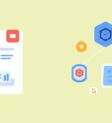
Artificial intelligence (AI) has revolutionized how businesses approach automation by introducing adaptive, data-driven agents that extend far beyond static workflows. At the heart of this transformation lies the practice of connecting AI agents to APIs, enabling seamless integration, smarter decision-making, and streamlined operations. In this article, we’ll dive into what AI agents and APIs are, explore their powerful synergy, and examine strategies and tools for effective integration.
Understanding AI Agents and APIs
AI agents are autonomous software programs designed to perceive their environment, interpret data, and take purposeful actions, all in the pursuit of specific goals. Rather than following rigid, pre-programmed instructions, these agents harness machine learning and data analysis, adapting to new situations and solving problems on the fly. You interact with AI agents every day—virtual assistants like Siri, AI-powered chatbots, personalized recommendation engines, and even self-driving vehicles are all prime examples.
APIs, or Application Programming Interfaces, are the channels through which software applications “talk” to each other. They define the protocols for data exchange, enabling developers to tap into external services—like payment gateways, social media feeds, or mapping data—without reinventing the wheel. For instance, integrating the Google Maps API adds location intelligence to a business’s app, while the Twitter API automates social media postings.
When connecting AI agents to APIs, the result is a dynamic framework for intelligent automation. AI agents analyze data, make decisions, and trigger actions, while APIs let them interact with the wider digital world. Whether it’s a conversational agent coordinating flight bookings across multiple suppliers or an analytics platform feeding insights into a CRM, these partnerships empower businesses to do more, faster and smarter. If you’re interested in practical applications of this technology, check out our Best Use Cases for TheAgentBot in 2025.
The Power of Connecting AI Agents to APIs
Tethering AI agents to APIs transforms their capabilities—from passively reacting to data within their limited domain, to actively orchestrating complex workflows using real-time information and services distributed across the digital ecosystem.
For example, by leveraging APIs, an AI agent can automate nearly any operational process:
- Meeting Scheduling: An AI can use calendar APIs to automate booking processes, check availability, and send reminders without human intervention.
- Customer Support: A chatbot utilizing shipping and order management APIs can track packages, update statuses, and resolve issues around the clock.
- Healthcare: Agents retrieve patient records and coordinate care through health system APIs, streamlining administrative workloads and boosting patient satisfaction.
This type of automated orchestration cuts down on manual data entry, minimizes errors, and rapidly accelerates response times across business processes.
As organizations introduce new data sources or technologies, APIs future-proof their AI automations. With each new connection, AI agents become adaptable powerhouses—capable of integrating analytics, machine learning models, and even more APIs—resulting in agile systems ready to address evolving challenges. For insights on building advanced, multi-task agents, you can reference our Step-by-Step Guide to Building a Multi-Task AI Agent.
Key Use Cases of AI-API Synergy in Smart Automation
Connecting AI agents to APIs is at the forefront of “smart automation,” with real-world impact across industries:
- Automated Customer Support: AI-powered chatbots and virtual assistants, synchronized with CRM and helpdesk APIs, handle routine queries, process requests, and provide instant responses—freeing human agents to tackle complex issues.
- Workflow Optimization: AI reviews business processes, flags bottlenecks, and automates repetitive tasks by triggering workflows across integrated platforms using relevant APIs.
- Advanced Data Analysis: Machine learning algorithms process and analyze data from disparate sources, leveraging APIs for data aggregation, real-time reporting, and predictive analytics.
The result? Increased productivity, fewer errors, and rapid, data-driven decisions. Such automation not only enhances business outcomes but also drives strategic growth by allowing staff to focus on high-value tasks.
For more sector-specific automation scenarios, see our article on TheAgentBot Integrations: Tools You Can Connect Today.
Common Challenges and Best Practices When Connecting AI Agents to APIs
As promising as this automation is, blending AI agents and APIs isn’t without its hurdles. Two primary challenges emerge:
- Security: APIs often open doors to sensitive data and backend operations. Robust authentication (like OAuth 2.0) and data encryption (TLS) are critical to block unauthorized access and protect privacy.
- Compatibility: APIs can differ in format, protocol, and version. This can disrupt AI-agent workflows if endpoints change or data structures are inconsistent.
To overcome these obstacles:
- Use well-documented, actively maintained APIs
- Implement rigorous authentication and authorization
- Validate input/output data rigorously
- Monitor API performance and AI outcomes for anomalies
- Modularize integration logic for easy updates or swaps
With the right design, these best practices safeguard security and maintain the flexibility needed for AI-powered automations.
For a deeper look at easy integration methods, you might also explore our guide on Setting Up Custom AI Agents with TheAgentBot.
Essential Tools and Frameworks for Connecting AI Agents to APIs
The landscape of tools and platforms for connecting AI agents to APIs is rich and rapidly evolving. Some of the most widely adopted and effective solutions include:
- OpenAI API & SDKs: Embeds leading AI models (like GPT) into any application, offering fast integration and broad language support.
- Microsoft Azure AI Services: Brings vision, speech, and language intelligence to applications, with robust APIs and enterprise-grade security.
- Google Cloud AI: APIs like Vertex AI and Dialogflow streamline the creation of conversational agents that interact with diverse external APIs.
- RapidAPI: An API marketplace for discovering and integrating thousands of APIs via a unified interface, perfect for layering APIs inside AI-driven apps.
- Hugging Face Transformers & Inference API: Simplifies access to pre-trained NLP models for integration with custom AI agents.
- LangChain: Ideal for building context-aware AI agents managing multiple API connections and orchestrating complex AI workflows.
- Postman: An indispensable tool for testing, monitoring, and documenting API integrations—especially when managing frequent changes or complex automations.
- Flask & FastAPI: Lightweight web frameworks for building or customizing APIs and AI-agent backends, with features like asynchronous support and automatic documentation.
Choosing the right combination will depend on your goals, data sensitivity, cost concerns, and the scalability requirements of your automation project. For inspiration on integrating a specific tool, try reading about How to Use Webhooks with Your AI Agent.
The Future of API-Powered AI Automation
The next frontier in connecting AI agents to APIs will emphasize composable architectures, low-code/no-code development, and orchestration tools that allow non-developers to automate complex tasks. As standards like OpenAPI and GraphQL mature, integration barriers will continue to fall, making it easier than ever to connect disparate AI services and automate domain-specific processes.
Expect further adoption of real-time event-driven systems, responsive automations, and advanced API governance frameworks prioritizing compliance and secure data flows. AI model marketplaces and self-healing automation routines will become commonplace, underpinning a new era of agile, robust business operations powered by interconnected AI agents and APIs (Gartner, 2024).
For hands-on exploration of these innovations, our beginner’s guide on Getting Started with TheAgentBot is a good place to dive in.
Conclusion
Connecting AI agents to APIs is redefining digital automation—enabling adaptive, intelligent systems that unlock unprecedented efficiency and strategic value. By understanding the fundamentals, addressing integration challenges, and leveraging the right tools, businesses can future-proof their automation strategies and stay ahead of emerging trends.
As the ecosystem evolves, organizations that embrace this synergy between AI and APIs are poised to lead in innovation, operational excellence, and customer satisfaction.






